Why is Secure Website Design Crucial?

In today’s digital world, where businesses and individuals are more reliant on the online space than ever before, #Web_Security is no longer an option but an undeniable necessity.
Imagine your website, your online business storefront, or your primary customer communication platform, being subjected to cyberattacks.
The consequences of such an event can be catastrophic; loss of sensitive customer data, severe damage to brand reputation, significant financial losses due to operational downtime, or legal fines.
Secure website design not only protects your and your users’ information but also builds their trust.
Users who know their data is in a secure environment will use your services with greater confidence.
This proactive approach in secure website design means investing in the future of your business.
Without a comprehensive plan for #Data_Protection, you will be vulnerable to attacks such as #Privacy_Breach or #Financial_Fraud.
Many companies only realize the vital importance of security after experiencing a major security breach, but unfortunately, by then, it might be too late.
The sooner you consider secure website design, the more likely you are to prevent potential irreparable damages.
This is a long-term strategy that helps you remain resilient against the growing threats in cyberspace and effectively protect your digital assets.
Cybersecurity is an ongoing process and does not end with a one-time application of security principles; it requires continuous maintenance and updates.
Tired of your company’s website not being seen as it should be, and losing potential customers? Solve this problem forever with professional and effective website design by Rasawp!
✅ Increase brand credibility and build customer trust
✅ Attract targeted sales leads
⚡ Contact us now for a free consultation!
Familiarity with the Most Common Vulnerabilities and Security Threats
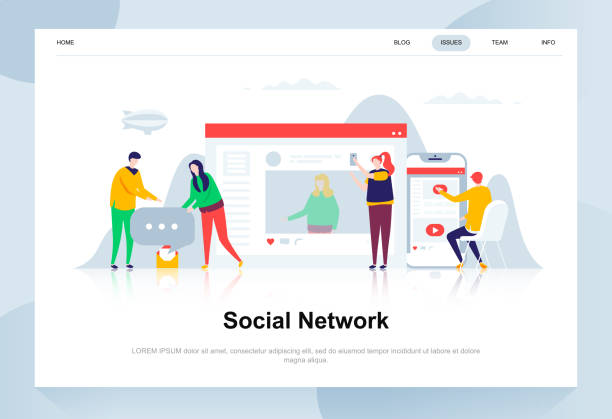
Knowing the enemy is the first step to effective defense.
In the realm of secure website design, this means a deep understanding of the most common #Web_Vulnerabilities and how attackers exploit them.
The OWASP (Open Web Application Security Project) organization publishes a list of the top 10 vulnerabilities every few years, which can be an excellent guide for developers and security professionals.
One of the most well-known attacks is #SQL_Injection, where an attacker injects malicious SQL code into application inputs to gain access to the database, manipulate, or even delete information.
The #XSS (Cross-Site Scripting) attack also allows an attacker to inject malicious client-side scripts into web pages to steal user information or take control of their sessions.
#Broken_Authentication occurs when there are flaws in the implementation of login and session management mechanisms, enabling attackers to impersonate users.
#Sensitive_Data_Exposure means the disclosure of sensitive user data due to insufficient encryption or protection, which can lead to the theft of personal or financial information.
#CSRF (Cross-Site Request Forgery) enables an attacker to send malicious requests from the authenticated user’s behalf to the website without the user’s knowledge.
Understanding these threats and how they operate provides a strong foundation for any effort towards secure website design and strengthening your website’s security.
This knowledge helps you identify potential weaknesses during the design and development phases and address them before they become serious problems.
For more information on OWASP Top 10 vulnerabilities, you can refer to the OWASP website.
Principles of Secure Website Design in the Software Development Life Cycle
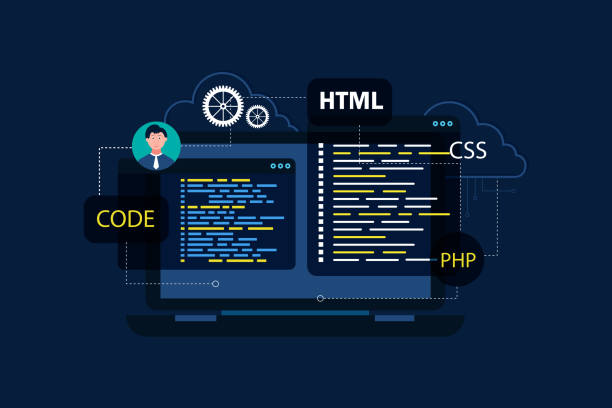
Security should not be the final stage of development; rather, it should be embedded from the very beginning and throughout all stages of the #SDLC (Secure Development Life Cycle) or software development cycle.
#Secure_Website_Design means incorporating security considerations into the design, coding, testing, and even deployment phases.
One of the most important principles is #Input_Validation.
Never trust data coming from the user.
All inputs must be carefully validated to prevent the injection of malicious code or invalid data.
For example, using #Parameterized_Queries or ORMs in database interactions effectively prevents SQL Injection attacks.
Also, #Secure_Output means properly encoding any data displayed to the user to prevent XSS attacks.
Using secure libraries and frameworks, which themselves adhere to security principles and are regularly updated, can significantly raise the security level of your code.
Developers should be continuously trained and aware of the latest threats and best security practices.
Security Code Review by experts is also a critical step that helps identify and fix security weaknesses before deployment.
Implementing a security policy from the outset, instead of patching at the final stages, leads to a stronger and more secure website.
This comprehensive approach significantly reduces the long-term cost and time required to fix security issues and forms the main part of the secure website design process.
In the following, you can see a comparative table of secure and insecure coding principles:
| Secure Principle | Practical Example | Insecure Method (Avoid) |
|---|---|---|
| Input Validation | Using regular expressions (Regex) for phone numbers or emails | Trusting any input without verification |
| Secure Output (Encoding) | Using HTML entity encoding to display user input | Directly displaying user input without any filtering |
| Using Parameterized Queries | Executing database queries with parameters instead of direct string concatenation | Directly concatenating user input into SQL queries |
| Proper Error Handling | Displaying generic error messages to the user and logging technical details | Displaying error messages containing sensitive information (e.g., database details) |
Securing Databases: The Heart of Every Website

The database is the treasure trove of a website’s information, and for this reason, it is one of the most attractive targets for cyber attackers.
#Database_Security is a critical backbone in secure website design.
To ensure data safety, implementing multiple layers of protection is essential.
Firstly, #Sensitive_Data_Encryption, both at rest and in transit, should be a priority.
This prevents direct disclosure of information even if unauthorized access to the database occurs.
Secondly, the principle of #Least_Privilege must be strictly adhered to; meaning that each user or process should only have access to the minimum data and operations required to perform their tasks.
For example, a website user should never have direct access to database administrative tables.
Using strong and complex passwords for database access and changing them regularly are other essential measures.
Also, monitoring tools should be used to oversee database activities so that any suspicious activity is quickly identified.
Regular and encrypted backups of the database are a vital solution for rapid information recovery in the event of an attack or disaster.
These backups should be stored in a secure and separate location.
#Secure_Database_Configuration, including closing unnecessary ports, disabling default services, and applying security settings recommended by the database vendor, is also important.
Without a secure database, even if your website’s code is flawless, you will still be at serious risk, which doubles the importance of #Web_Security_Provision.
Does your current website convert visitors into customers, or does it drive them away? Solve this problem forever with professional corporate website design by Rasawp!
✅ Build strong credibility and branding
✅ Attract target customers and increase sales
⚡ Get a free consultation now!
Strong Authentication and Authorization Mechanisms
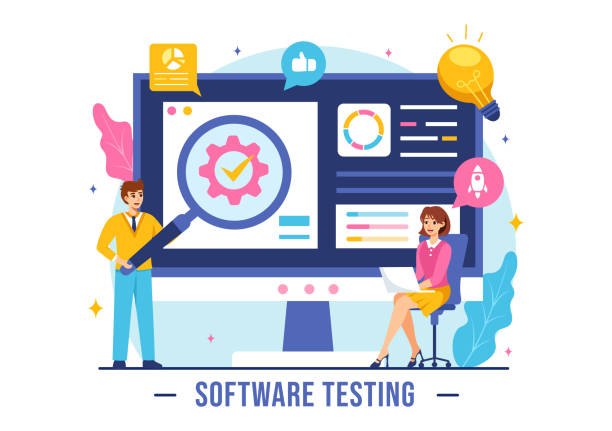
Authentication and Authorization are two fundamental pillars in secure website design that control who can access the system and, after entry, what resources they can access.
Flaws in these mechanisms are among the most common vulnerabilities.
For strong authentication, it is essential to use #Strong_Password_Hashing (such as bcrypt or Argon2) instead of storing plain text or weak hashes.
Additionally, implementing complex password policies that force users to use long passwords, including letters, numbers, and symbols, is crucial.
#Two-Factor_Authentication (2FA) or Multi-Factor Authentication (MFA) should be enabled for all user accounts, especially administrative accounts.
This extra security layer prevents unauthorized access even if the password is stolen.
#Secure_Session_Management is also highly important; session tokens should be randomly generated, have limited lifespans, and be immediately invalidated after a user logs out.
For authorization, implementing #Role-Based_Access_Control (RBAC) or #Attribute_Based_Access_Control (ABAC) is recommended.
These systems ensure that each user only has access to functions appropriate to their role or attributes.
For example, a regular user should not be able to change system administrator information.
Thorough tests should be performed on all authentication and authorization mechanisms to ensure there are no loopholes for unauthorized access.
These collective measures form the backbone of #User_Account_Security on any website and are an integral part of secure website design.
The Role of Server and Infrastructure Security in Secure Website Design
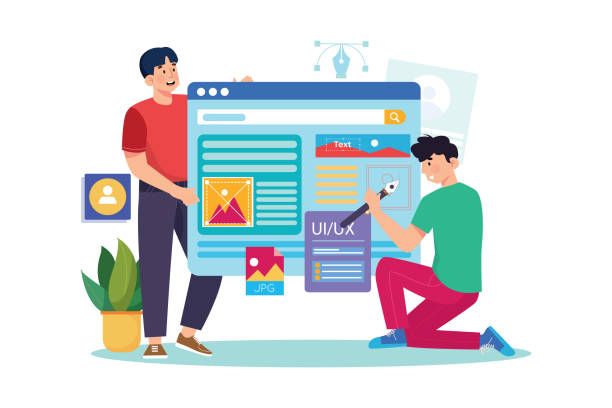
Website security is not limited to coding; it heavily depends on the #Infrastructure_Security and the server hosting the website.
Even with the best secure code, a vulnerable server can render all your efforts ineffective.
#Server_Hardening is the first step.
This involves removing all unnecessary software and services, closing unused ports, and securely configuring the operating system (such as Linux or Windows Server).
Powerful #Firewalls, both at the network level (like hardware firewalls) and at the application level (Web Application Firewall – WAF), play a vital role in filtering malicious traffic and blocking common web attacks.
WAFs are specifically designed to protect against attacks like SQL Injection and XSS.
Implementing #IDS/IPS (Intrusion Detection/Prevention Systems) can also identify and block suspicious activities.
#Operating_System_Updates, server software (like web servers, databases), and all used libraries must be performed regularly and promptly to address known vulnerabilities.
Using a #Secure_and_Reputable_Hosting provider that also adheres to high security protocols is very important.
Furthermore, implementing a #Content_Delivery_Network (CDN) not only increases website speed but also creates an additional security layer by obscuring the main server’s IP address and providing DDoS protection services.
All these measures collectively contribute significantly to #Website_Security_Strengthening and ensuring a stable and secure infrastructure for #Secure_Website_Design.
Penetration Testing and Periodic Security Audits

After implementing all security measures, the main challenge is to determine whether these measures are truly effective.
This is where #Penetration_Testing and #Periodic_Security_Audits play a vital role.
Penetration testing, often abbreviated as “pen test,” is the simulation of a real cyberattack by security professionals (ethical hackers) to identify and address system vulnerabilities and weaknesses before they are discovered by real attackers.
This process includes information gathering, vulnerability scanning, exploiting weaknesses, and attempting to gain system access.
The results of a pen test usually come with a comprehensive report of the vulnerabilities found, their risk level, and recommendations for remediation.
In addition to manual penetration testing, using #Automated_Vulnerability_Scanners can regularly examine the website to identify known weaknesses.
Broader security audits should also be conducted periodically, including reviews of security policies, configurations, logs, and security processes.
#Patch_Management is also an important aspect; as soon as security patches are released for the software and frameworks used, they must be applied quickly.
Negligence in this area can open doors for new attacks.
This proactive and continuous approach to identifying and addressing vulnerabilities is an integral part of #Secure_Website_Design and long-term #Cybersecurity maintenance.
Regular audits ensure that your website remains resilient against emerging threats.
In the following, a table of common security test types is provided:
| Security Test Type | Description | Main Goal |
|---|---|---|
| Penetration Test | Simulating a real attack by ethical hackers | Identifying exploitable vulnerabilities and operational weaknesses |
| Vulnerability Scan | Using automated tools to identify known security weaknesses | Quickly cataloging vulnerabilities on a broad scale |
| Code Review | Manual or automated review of source code to find security flaws | Finding security bugs at the coding level |
| Black Box Testing | Testing a website without access to internal code or infrastructure | Mimicking an external attacker’s actions without prior knowledge |
| White Box Testing | Testing a website with full access to source code, architecture, and infrastructure | More detailed and comprehensive examination of weaknesses at all levels |
Incident Response and Disaster Recovery
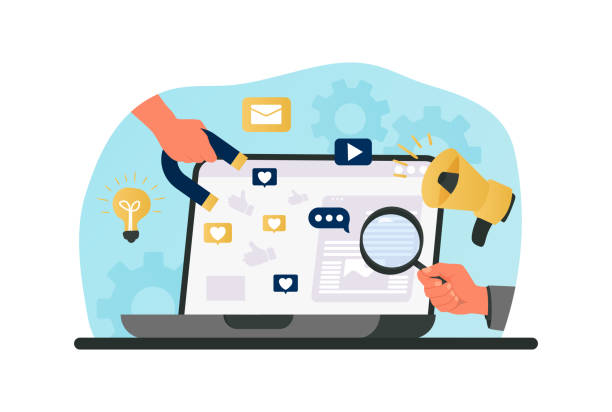
Even with the best secure website design strategies, the probability of a security incident never reaches zero.
Therefore, having a #Incident_Response_Plan comprehensive and well-documented, is critically important.
This plan should include specific steps for identification, containment, eradication, recovery, and post-incident analysis.
Identification means the ability to quickly detect the occurrence of a breach or attack, which is possible through strong monitoring and logging systems.
The containment phase includes actions to prevent the spread of the attack and minimize damages, such as isolating infected systems.
In the eradication phase, the goal is to identify the cause and how the attack occurred to prevent its recurrence.
#Information_and_System_Recovery to an operational state prior to the incident, is performed by restoring from healthy backups and ensuring complete system cleanup from any malware or backdoors.
Finally, the post-incident phase involves analyzing what happened, learning from it, and updating security policies and procedures.
Additionally, having a #Disaster_Recovery_Plan is essential to ensure business continuity in the face of larger incidents such as widespread hardware failure or natural disasters.
This includes strategies for regular and tested backups of data and systems, and the ability to rebuild the website environment in another location.
Security teams should regularly conduct incident simulation exercises to be adequately prepared for a rapid and effective response.
This readiness is the final and complementary component of secure website design, ensuring that your business will continue to operate even in the worst-case scenarios.
Do you have an e-commerce site, but your sales aren’t as expected? Rasawp solves your problem forever with professional e-commerce website design!
✅ Significant increase in conversion rates and sales
✅ Unparalleled user experience for your customers
⚡ Click here to get a free consultation with Rasawp!
User Awareness and Education: The Cornerstone of Secure Website Design

In all discussions related to #Cybersecurity, it is often said that the weakest link in the security chain is the human factor.
Even with the strongest security systems and the most sophisticated firewalls, a simple user error can open the system’s doors to attackers.
Therefore, #User_Education and increasing their awareness are fundamental pillars in #Web_Security_Provision and secure website design.
Training programs should educate users about common threats such as #Phishing, #Social_Engineering, and the importance of using #Strong_and_Unique_Passwords.
For example, users should know never to click on suspicious links in emails or messages, not to enter their personal information on unfamiliar websites, and always to check the website’s URL before entering important information.
Educating about the use of two-factor authentication (2FA) and its benefits is also crucial.
This awareness can be increased by holding workshops, sending regular informative emails, and even displaying warning messages within the website.
Some platforms even host games or short quizzes related to cybersecurity for their users to turn education into an entertaining experience.
The main goal is to turn users into active guardians of their own security.
The more vigilant and aware your users are, the less likely social engineering and phishing attacks are to succeed.
This approach not only enhances individual user security but also generally helps to #Secure_Your_Website and the online community, and is considered a vital aspect of secure website design.
The Future of Secure Website Design and Emerging Trends

The #Cybersecurity space is constantly evolving, and with the emergence of new technologies, threats and security solutions also change.
Specialists in secure website design must constantly adapt to these changes.
One significant trend is the use of #Artificial_Intelligence_in_Security.
AI can play a crucial role in identifying attack patterns, detecting anomalies, and even predicting future threats, thereby increasing the efficiency of IDS/IPS and WAF systems.
On the other hand, attackers will also use AI to carry out more complex attacks, so this is a continuous arms race.
#Cloud_Security has also become a critical area due to the widespread migration of businesses to cloud platforms.
Securing applications and data in cloud environments requires different approaches and tools.
The concept of #Zero_Trust is increasingly gaining popularity, which is based on the principle that no user or device, even within the network, is trustworthy unless its identity and access authorization are continuously verified.
This security model emphasizes protecting each access point and data individually, rather than focusing on perimeter defense.
Furthermore, with the expansion of the Internet of Things (IoT) and new technologies such as #Blockchain for decentralized authentication and identity management, new challenges and opportunities will emerge in the field of cybersecurity.
Secure website design in the future will require a deep understanding of these emerging technologies and the ability to implement compatible security solutions.
This means a need for continuous training, research, and development in this area, to ensure that websites remain resilient against future security challenges.
The long-term stability and security of a website depend on its flexibility in adapting to these changes.
Frequently Asked Questions
And other services of Rasa Web advertising agency in the field of advertising
Benefits of collaborating with industrial platforms for cosmetic sellers
How to make ads attractive for cosmetic product distributors
The impact of product test images in industrial cosmetic ads
Using industrial applications to place ads for cosmetic products
Sales psychology techniques in cosmetic product ads
And over hundreds of other services in the field of online advertising, advertising consulting, and organizational solutions
Internet Advertising | Advertising Strategy | Advertorial
🚀 Transform your business’s digital presence with Rasa Web’s internet advertising strategies and advertorials.
📍 Tehran, Mirdamad Street, Next to Central Bank, Southern Kazeroun Alley, Ramin Alley, Plaque 6

